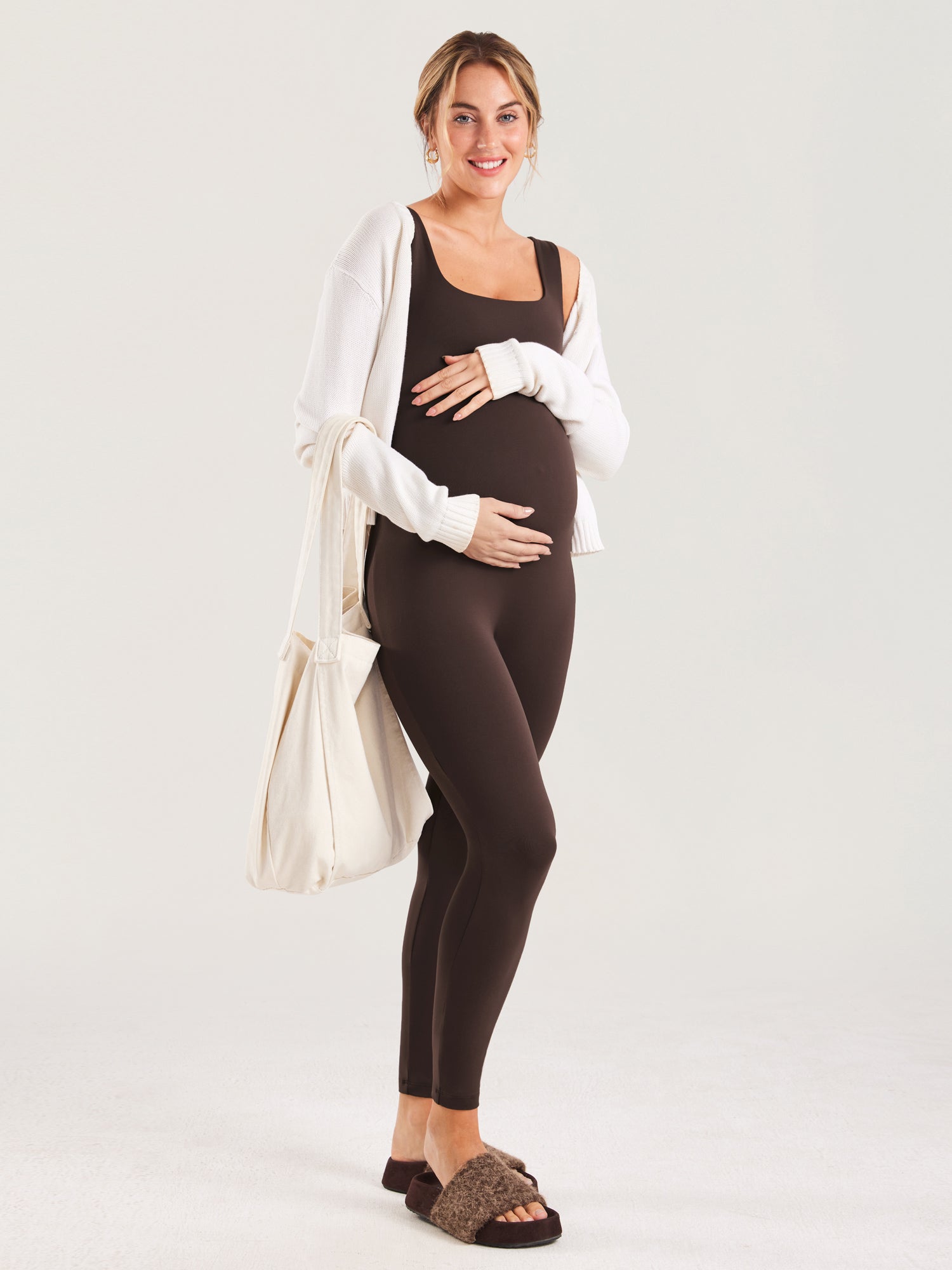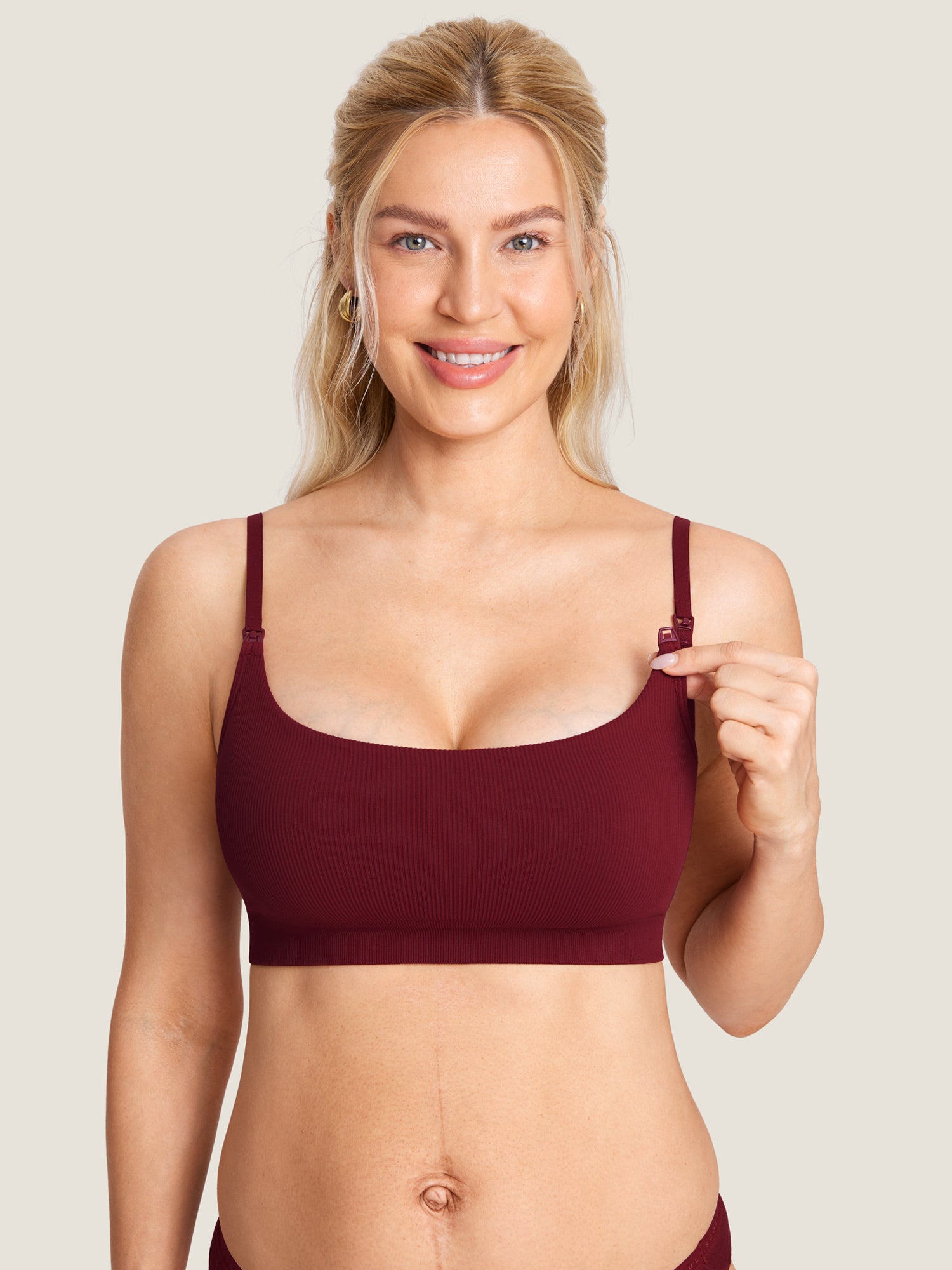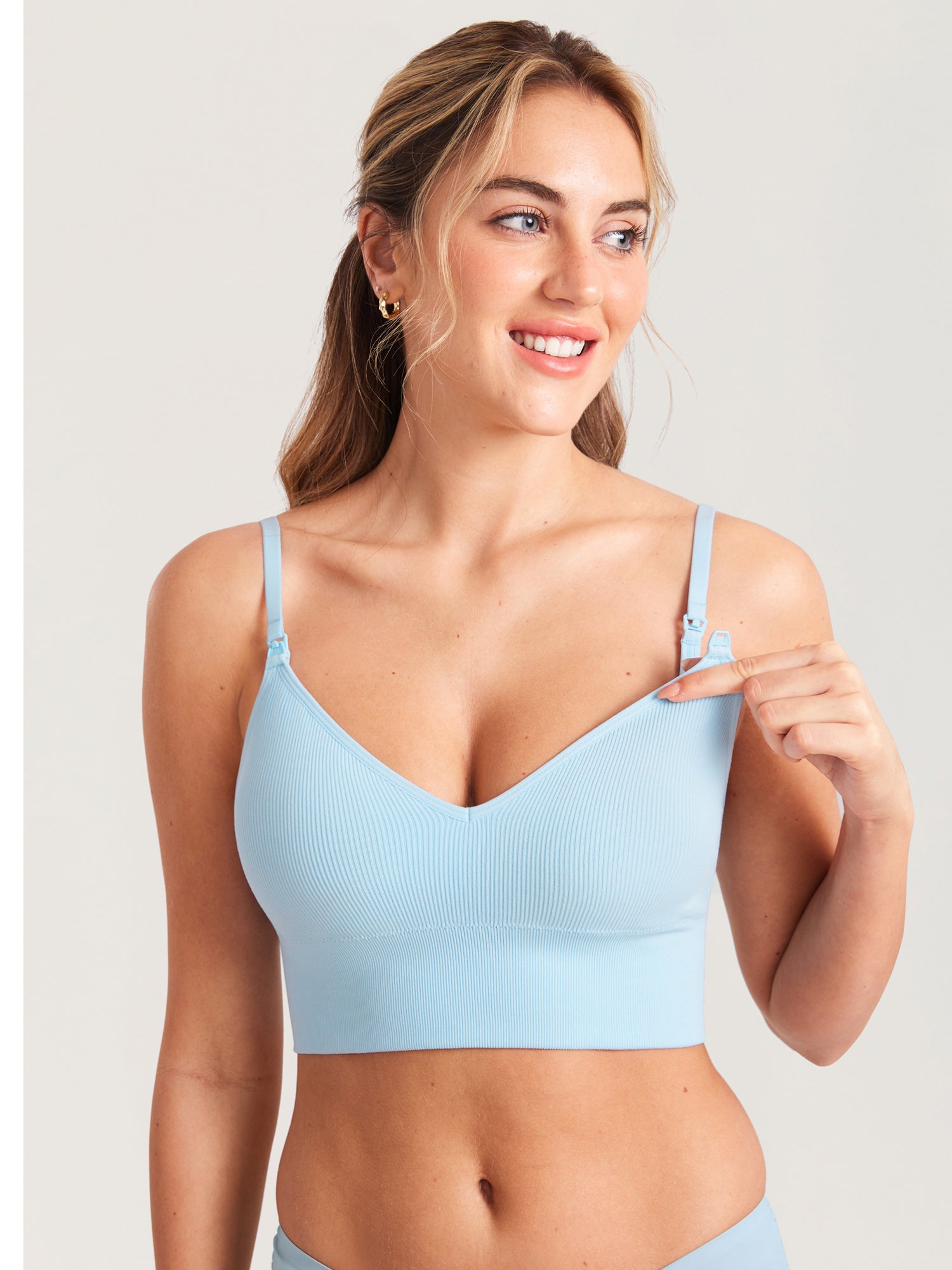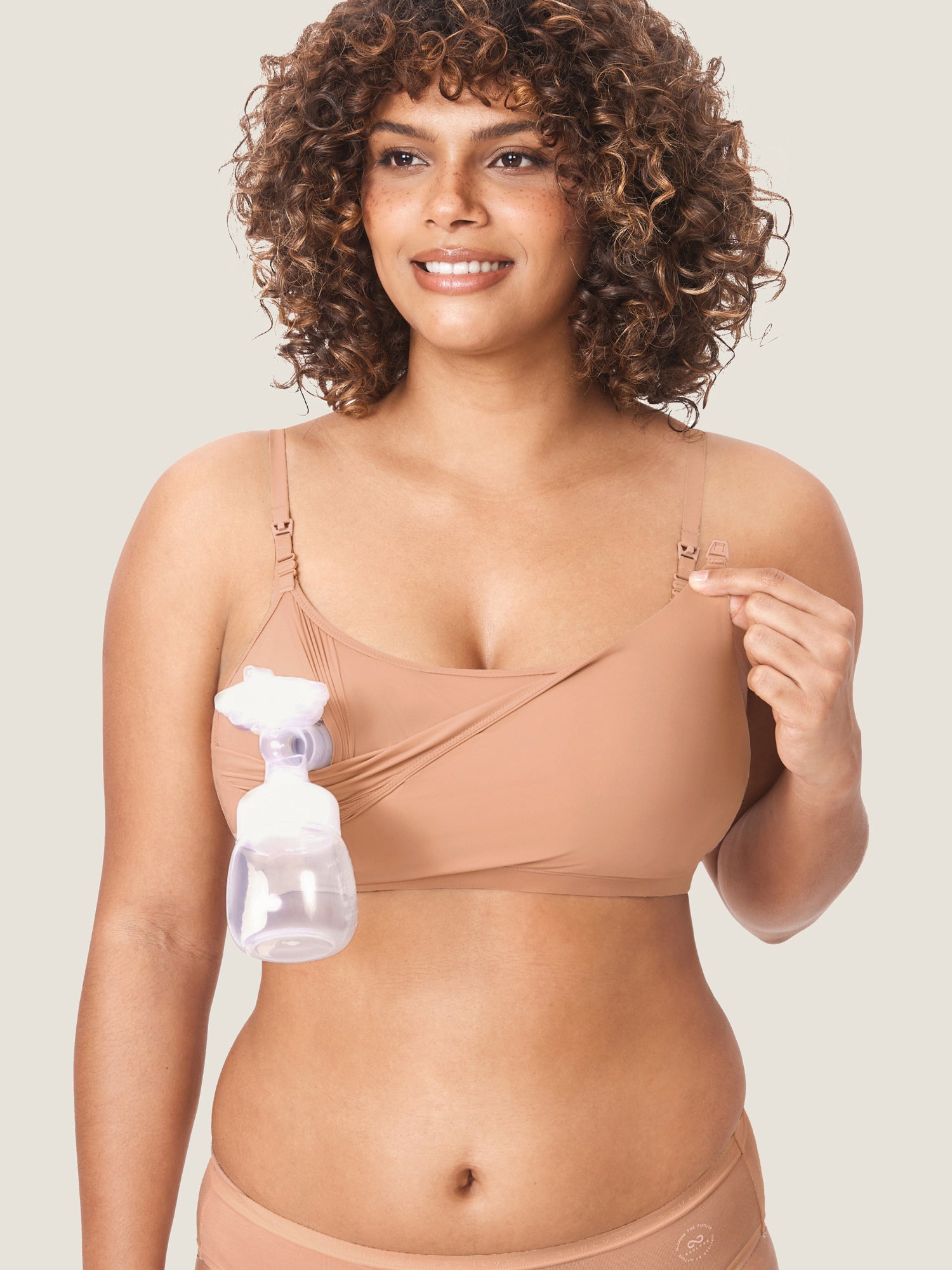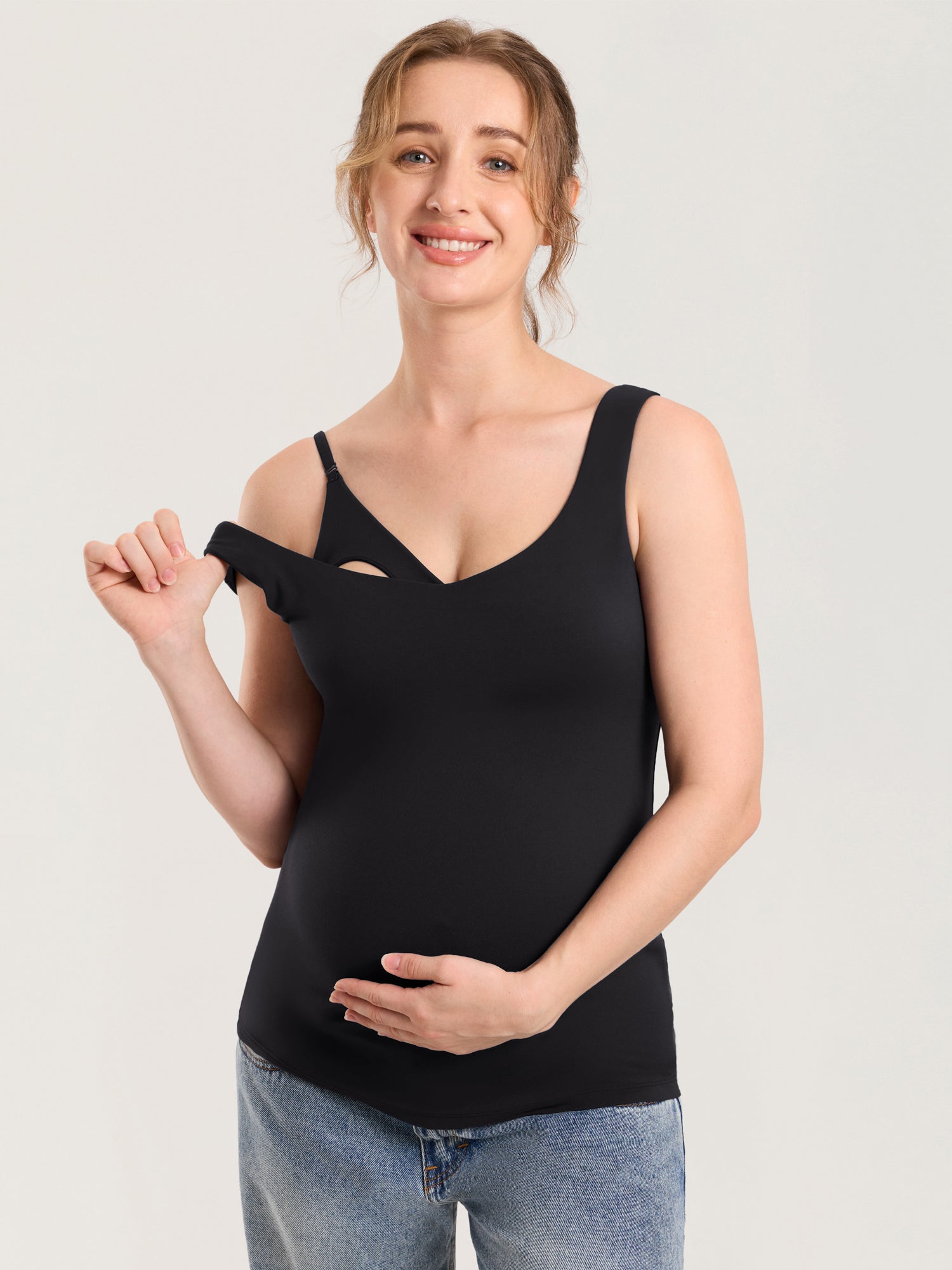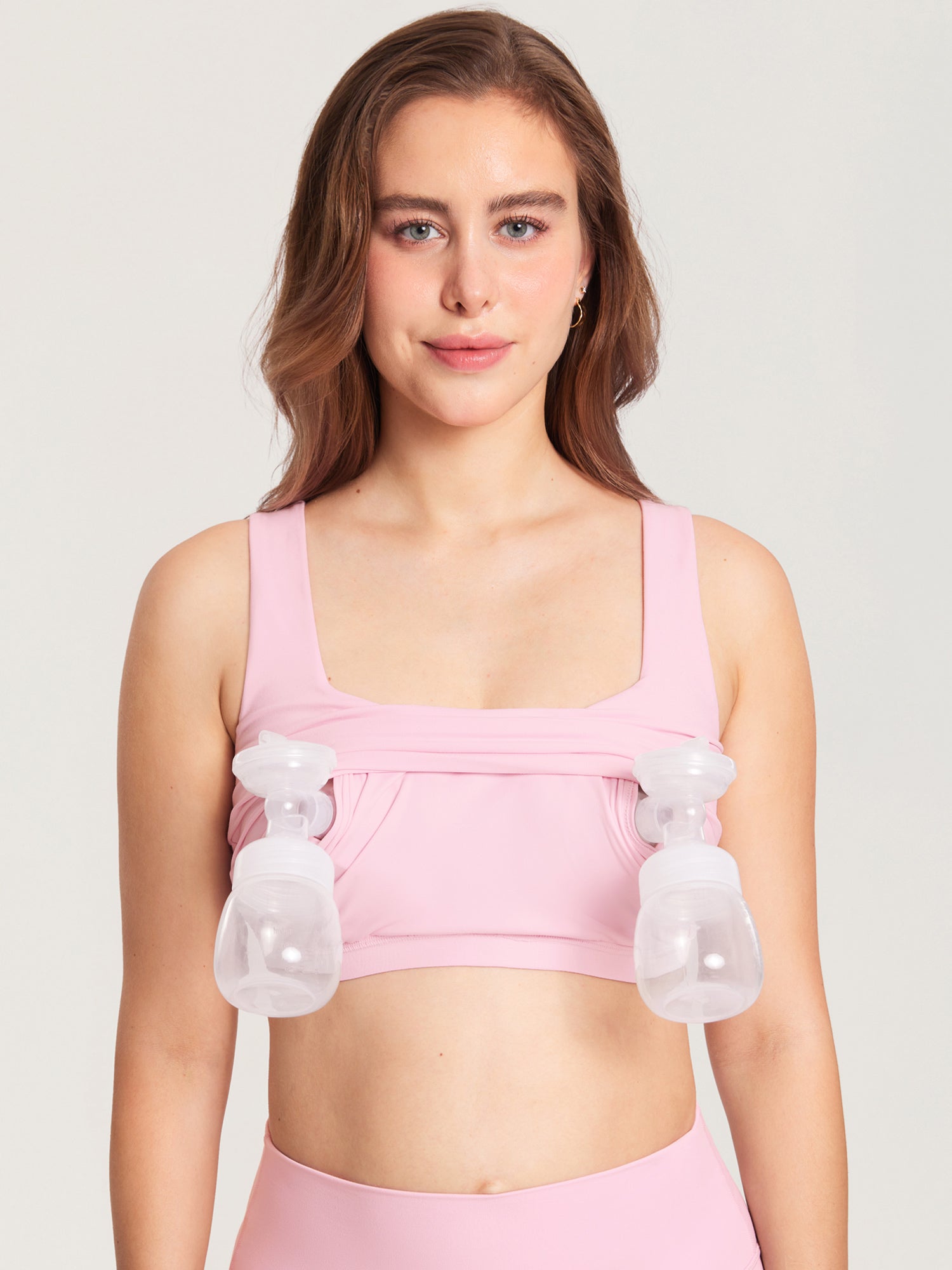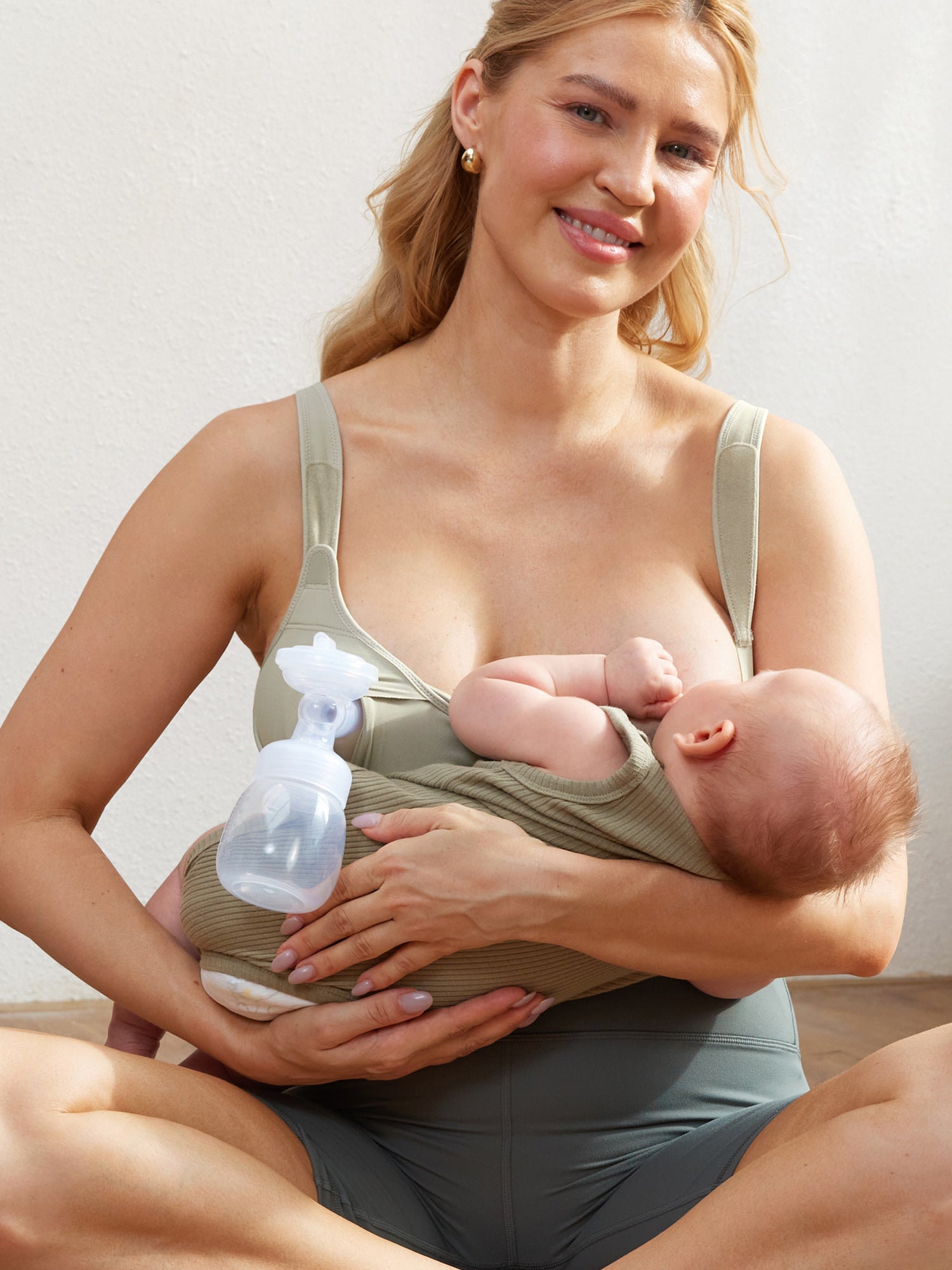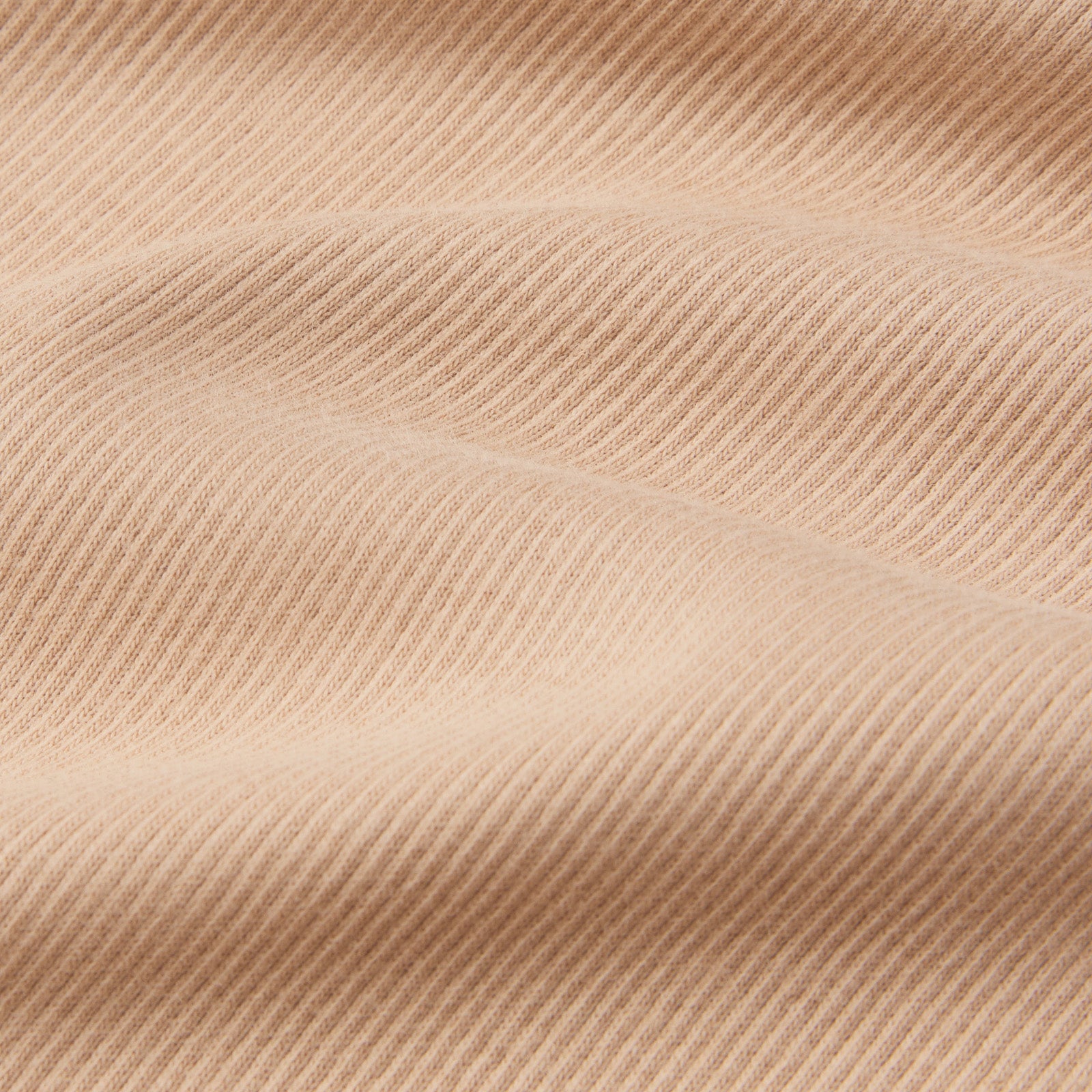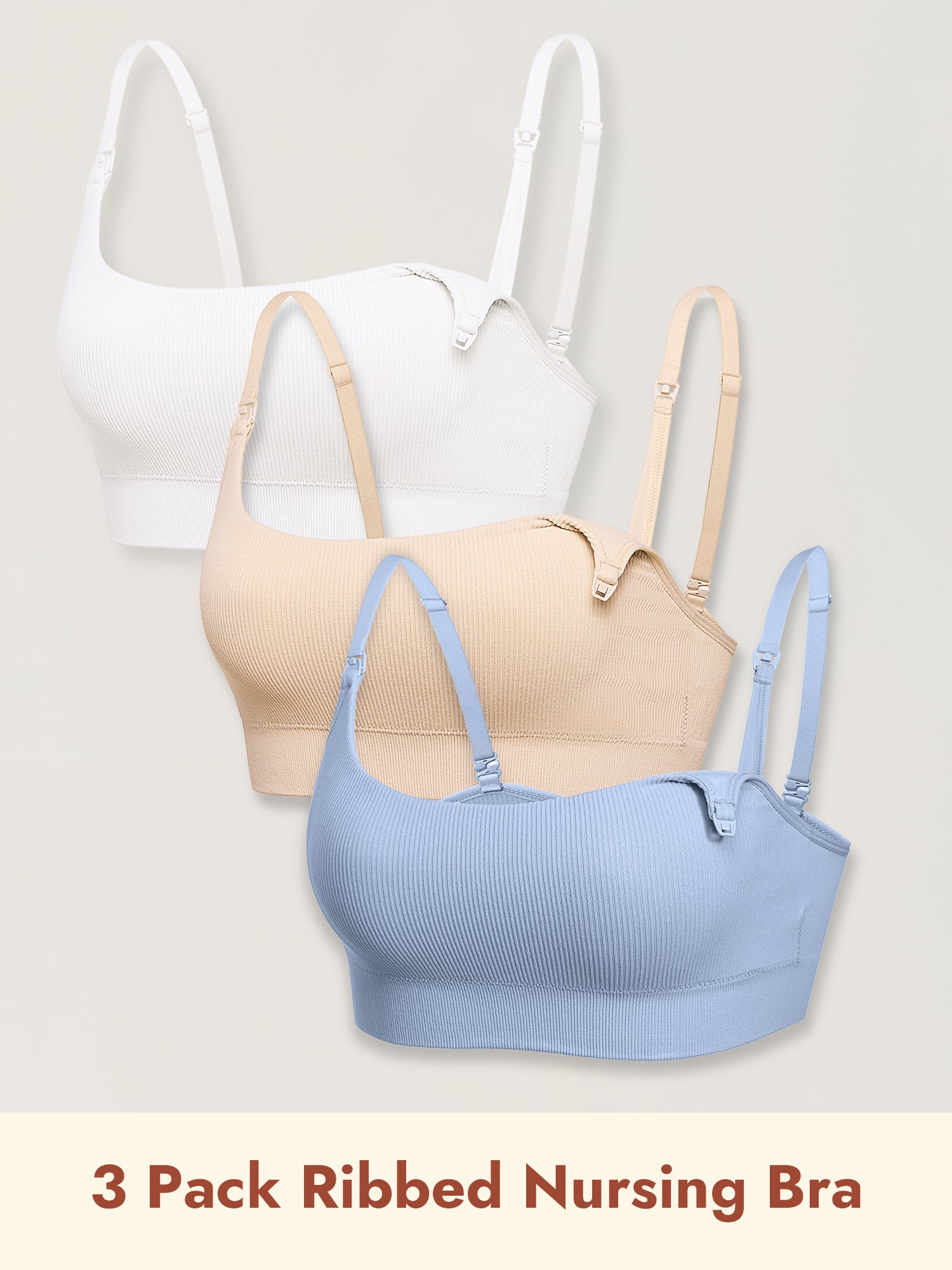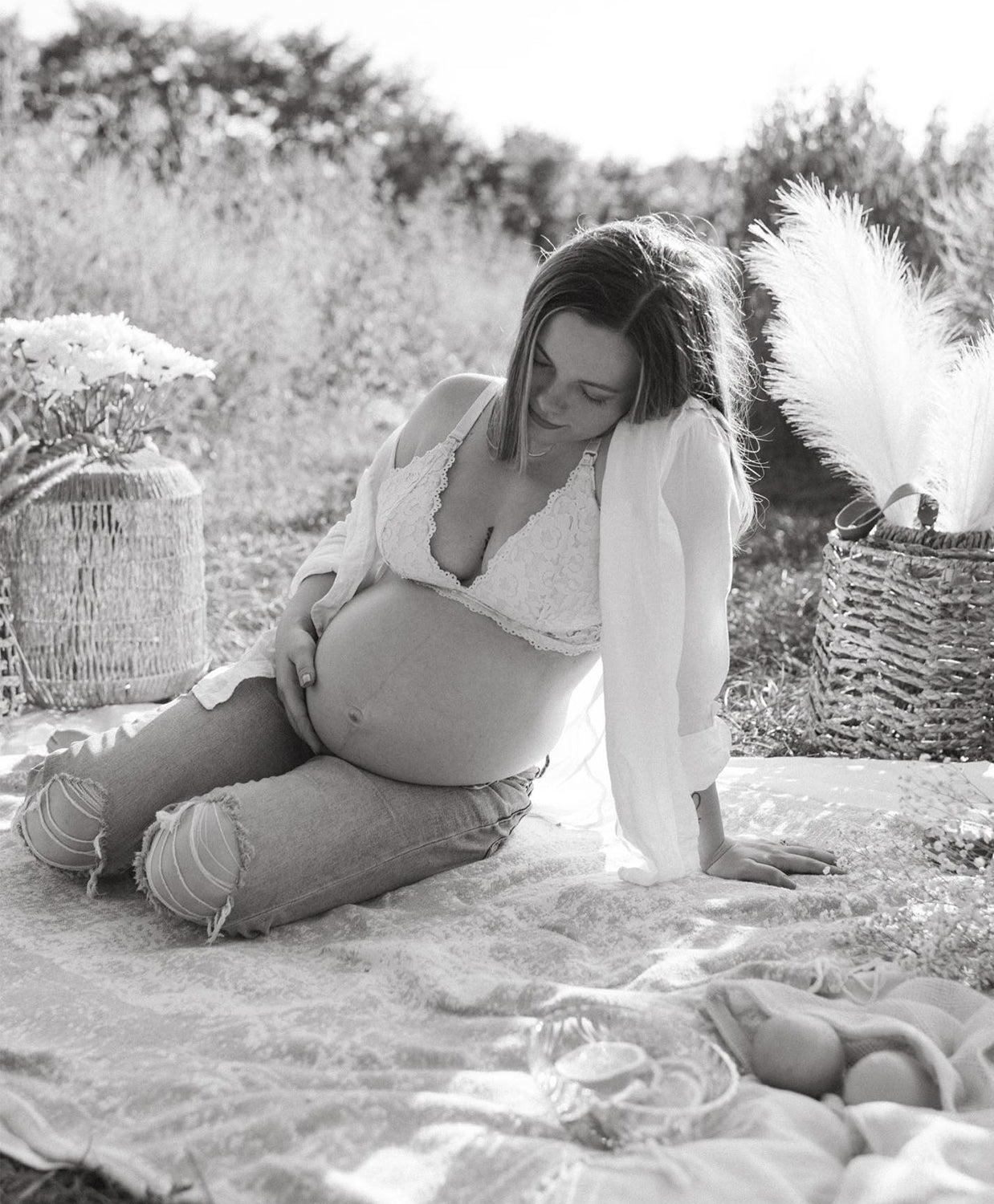Everything you need to know about breastfeeding

Every woman who breastfed her child has a breastfeeding story. For some, it went beautifully and she had an amazing experience breastfeeding. For others, it did not work at all, sometimes going so horribly wrong that she had an almost traumatic experience because of it. If you are getting information from both sides, it is easy to feel overwhelmed. And that’s why you need this guide.
Here is everything you need to know about breastfeeding, from how to get started to how to ensure you have a great experience with it.
How your breasts prepare themselves for breastfeeding during pregnancy
In the latter stages of pregnancy, your milk-producing glands will start to develop. This is driven by the presence of the hormones estrogen, progesterone, and prolactin. As these glands develop, your breasts will become bigger. Externally, your areola, or the dark circular area around your nipple, will become darker. This tells you that your body is getting ready to nourish your baby.
What can you do before your baby is born to prepare?
There are several things you can do before your baby gets here to make your breastfeeding journey a little easier. Here are some of them:
- Get quality prenatal care. Prenatal care involves selecting a doctor to help you monitor your pregnacny and going to prenatal checkups. This reduces the risk of premature birth. Premature babies have a harder time breastfeeding than full-term babies.
- Take breastfeeding classes. Several organizations offer these classes, and your chosen hospital may even have a program. A breastfeeding class will teach you the basics of breastfeeding to help you prepare.
- Talk with your doctor. Inform your doctor about your desire to breastfeed. This will ensure that any supplements, medication, or birth control that your doctor prescribes are safe for breastfeeding. Your doctor will also ensure that you can breastfeed as soon as possible after delivery.
- Talk to your friends. If you have mom friends, they will be able to support you as you prepare to breastfeed. There are also breastfeeding support groups that you can join where you’ll get support and guidance along with answers to any questions you might have as you prepare to welcome your baby.
- Get everything you need. Finally, stock up on all breastfeeding essentials, from nursing bras to breast pumps and everything in between. Here is our guide to breastfeeding essentials that will make your life easier.
When should you start breastfeeding?
Doctors recommend that you should start breastfeeding as soon as your baby is born. Ideally, you want to start doing it within the first two hours of birth.
In the first two hours of life, your baby will be super alert and very interested in breastfeeding. When you start, she will probably breastfeed in short bursts before getting tired and falling asleep. This is enough for them and the suckling sensation will prompt your breasts to start making even more milk.
If you had a c-section, breastfeeding will be a little difficult initially, but it can still be done. You will be given the support you need at the hospital to position your baby comfortably so that you can breastfeed as soon as you are settled in the recovery room.
Don’t worry if your baby feeds briefly but often. This is normal behavior that will help you establish a good milk supply. The more your little one breastfeeds, the better your body will be able to adjust its supply naturally to meet her demands.
When should you start breastfeeding?
Breastfeeding comes with countless benefits for both you and your little one. It is the perfect food for infants, packed with essential nutrients for their growth and development. It is also loaded with cells, hormones, and antibodies that help protect your baby from diseases.
📌Benefits of breastfeeding for your baby
Here is a closer look at some of the main benefits your little one will reap from being breastfed:
- Breastmilk is full of antibodies that will help boost your baby’s immunity
- Your breast milk is gentler to your baby’s stomach than formula, which means you will have to deal with fewer cases of stomach upsets, constipation, and diarrhea
- Breastfeeding is one of the ways that babies bond with their mothers Studies have shown that breastfed babies are less likely to develop allergies as they grow
- Breastfeeding helps in the development of oral muscles and the bones of the face
- Breastfeeding reduces the chances of diabetes, ear infections, and Crohn’s disease later in life
- It lowers the chances of some childhood cancers such as lymphomas
- Breastfed babies are less likely to have to go through childhood obesity
📌Benefits of breastfeeding for mom
Here are some of the benefits breastfeeding moms can reap from the experience of breastfeeding their little ones:
- Breastfeeding immediately after birth causes the uterus to start contracting sooner, preventing heavy bleeding
- When you breastfeed, it triggers the release of prolactin, the mothering hormone. This hormone promotes better sleep, allowing you to feel well-rested within a short time.
- Breastfeeding is a more cost-effective way of nourishing your little one than formula
- When you breastfeed, you delay the return of menstruation
- Breastfeeding is convenient. No matter where you are, you can easily feed your little one without having to worry about getting anything ready like you would when formula feeding
- Breastfeeding will help you shed the extra baby weight faster
- Studies show that breastfeeding can reduce the risk of developing postpartum depression.
- It reduces the risk of developing breast and ovarian cancers.
- Breastfed babies are less likely to get sick often, which improves your quality of life.
Latching basics
Latching is the process by which a baby takes the breast into her mouth to feed. Also called a breastfeeding latch, the way it happens is super important. A proper latch will allow your little one to feed more efficiently, keeping your supply up and helping you avoid sore nipples.
Newborns need to learn how to latch properly. You have to teach them how to do this as you learn what a proper latch feels like as well. This mutual learning process will involve a lot of trial and error, but after a few feeding sessions, you will both be experts.
In a proper latch, your baby has your entire nipple and part of your areola in her mouth. Her lips should be turned outward like a fish and her chin and nose should lightly touch your breast. To reposition your baby, gently use your finger to break the suction first before moving her.
Breastfeeding positions
The best breastfeeding position is the one that encourages a good latch. There are many different breastfeeding positions, and it is up to you to choose one that feels comfortable for you and is most effective in helping you feed your little one. For more information about this, check out our guide to the best breastfeeding positions.
Try out a few different positions as you breastfeed. Switching positions will help your baby drain milk from different areas of your breast. You can also try switching breasts as you feed your little one to ensure that both breasts are drained equally.
Stages of breast milk production
Your breasts produce breast milk based on supply and demand. The more your baby feeds, the more breast milk you’ll have. Over the first three weeks after delivery, your breast milk changes a lot:
- Day 1-5: For the first few days after birth, your breast milk is called colostrum. The colostrum is yellow and thick. It is filled with essential nutrients and everything that your baby needs to thrive over the first few days of life. You will not produce a lot of colostrum, but the amount that you’ll produce is more than enough to meet your newborn’s needs.
- Day 5-14: Your breast milk will increase in amount, and your breasts will feel fuller and heavier. During this time, your breast milk changes from colostrum to transitional milk, which is a mix of colostrum and mature milk.
- Day 14 onward: By week 2 after birth, your breasts will be producing mature milk exclusively. Mature milk is thinner at the beginning of a feeding session and thicker and richer towards the end. This is why you should try to drain the breast every time you feed your little one.
As you get used to breastfeeding your little one, you may start experiencing the let-down reflex. This is when your breasts feel like they are filling up, then a few minutes into the feeding, you feel a satisfying release. The letdown reflex is also responsible for your breasts leaking when you hear your baby crying or when it is past her feeding time.
How do you know if your baby is getting enough milk?
Most first-time moms are often concerned that they are not making enough milk for their babies. While this is a common concern, it is very rare to not produce enough breast milk to meet your baby’s needs. As long as your baby is latching correctly and feeding regularly (every two to three hours) you should be fine.
That said, here are a few signs that your baby is getting enough milk:
- Your baby is gaining weight steadily
- Your baby has 6-8 wet diapers a day
- Your baby has regular bowel movements
If you have any concerns about your baby’s weight gain or feeding habits, consult your pediatrician.
Breastfeeding essentials
The beauty of breastfeeding is that you can get started with it right away without having to worry about what supplies you need. As long as you have your breasts and your baby, you are good to go.
That said, there are a few essentials that will make your life a lot easier. We have covered all these in our ultimate guide to breastfeeding essentials. If you get nothing else from that list, ensure you have a good nursing bra.
What about pumping?
A lot of breastfeeding moms also pump. You may have to pump occasionally to ease breast engorgement or give your baby the occasional bottle. You may also opt to pump regularly while still breastfeeding your baby, or choose to pump exclusively if that’s what you want.
If you are planning to pump, get a high-quality breast pump, a pumping bra, and several breast milk storage bags. This will make your pumping life a lot easier.
Other important things to keep in mind about breastfeeding
Here are a few other important things to remember as you begin your breastfeeding journey
📌1. Your diet is important
Your baby eats what you eat. This means it is extremely important to eat a healthy postpartum diet. Here is our guide on what foods to eat and what to avoid during breastfeeding. Ensure you also keep the following tips in mind:
- Hydrate. Drink at least 8 glasses of water a day to keep the milk flowing.
- Eat a balanced diet. Have some protein, fruits, veggies, and whole grains daily. Also include calcium-rich foods like dairy and tofu in your diet.
- Eat more healthy fats, especially omega-3 fatty acids from low-mercury fish like sardines and salmon.
- Keep taking your prenatal vitamins until you are done breastfeeding.
📌2. Breastfeeding should not be a painful experience
The next thing you have to keep in mind as you breastfeed is that it should not be a painful experience. If you are experiencing pain as you breastfeed, there may be an underlying cause. Common causes of breastfeeding and nipple pain include:
- Mastitis: This is breast inflammation caused by an infection in the breast. It causes flu-like symptoms and red irritation around the breasts. You can avoid it by pumping or breastfeeding regularly to avoid inflammation.
- Blocked milk ducts: These will present themselves as one or more painful spots on your breast that are red and irritated. Apply a warm compress to the area and keep breastfeeding so that the flow of milk can remove the blockage.
- Sore or cracked nipples. You can prevent this by applying lanolin cream after each nursing session. A good latch can also reduce the risk of developing sore or cracked nipples.
Final Thoughts
Breastfeeding can indeed be quite the emotional rollercoaster, especially at the beginning. However, if you are patient and give it a bit of time, you and your little one will both become experts in no time. While it may have its challenges, it is still hands down the best way to nourish your little one, making it well worth the effort!
SUBCRIBE FOR NEWSLETTER
Shop today with 5% OFF your first order of all products storewide

